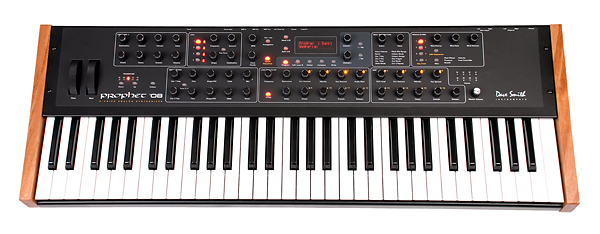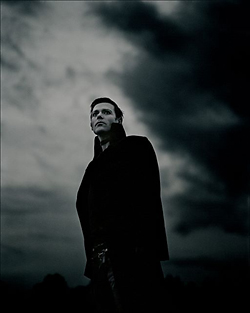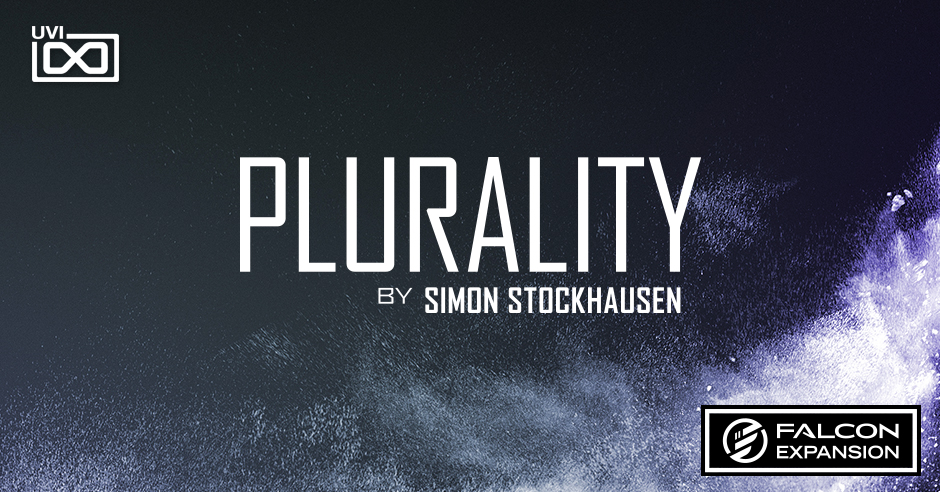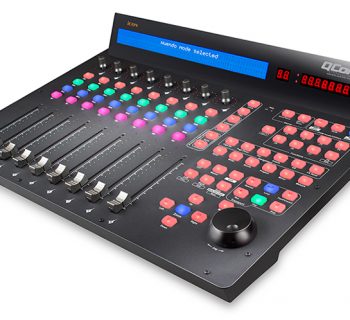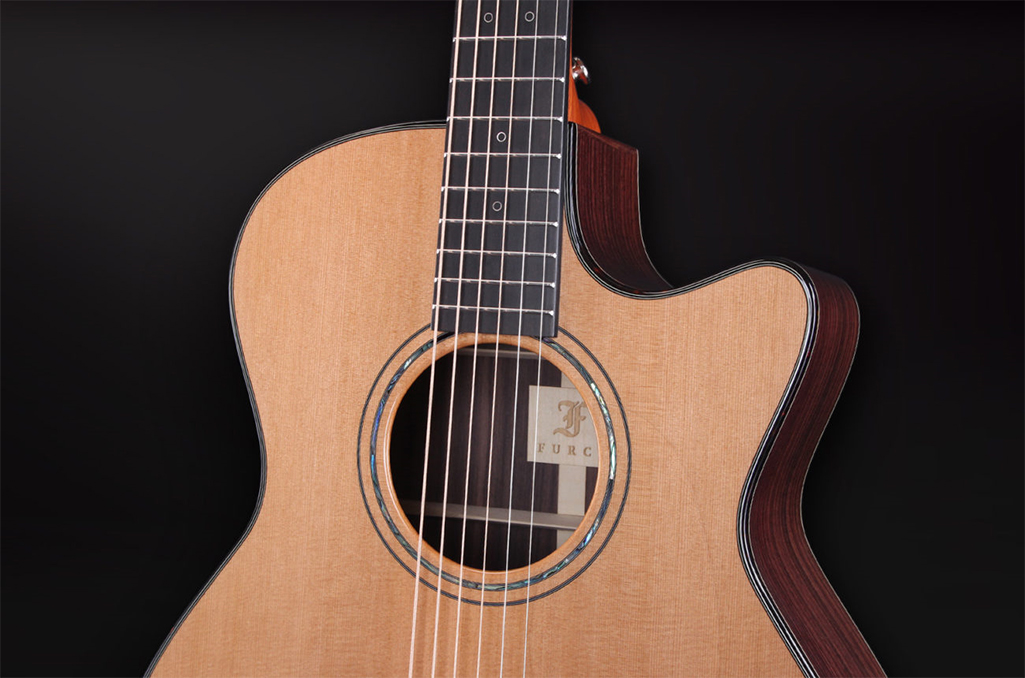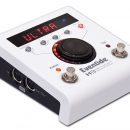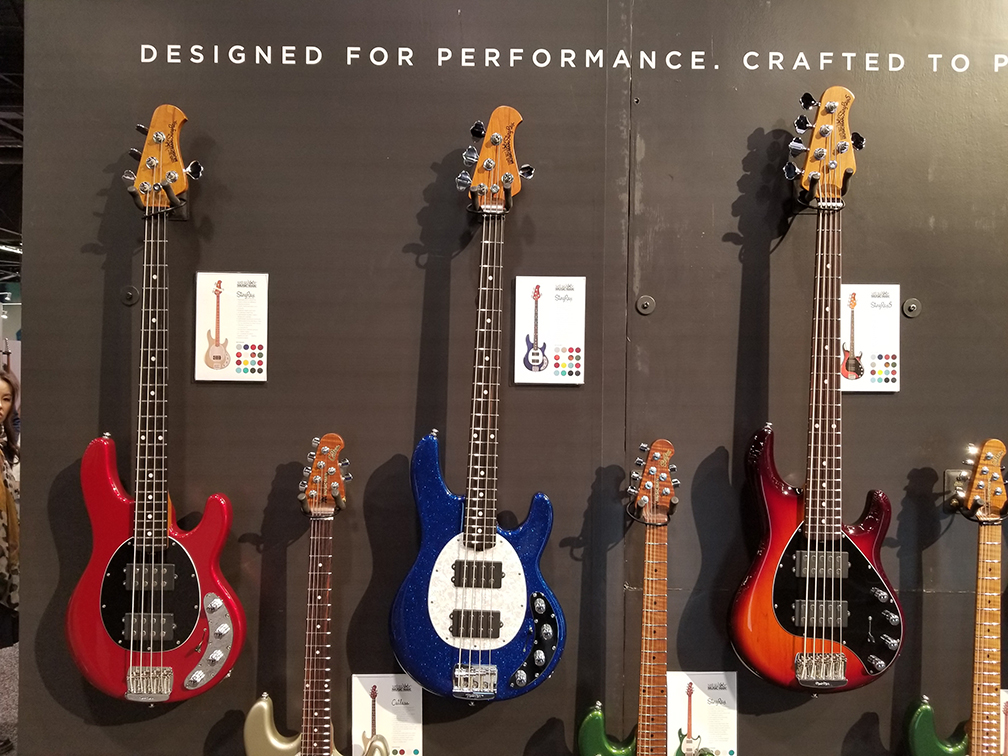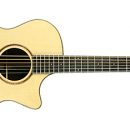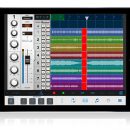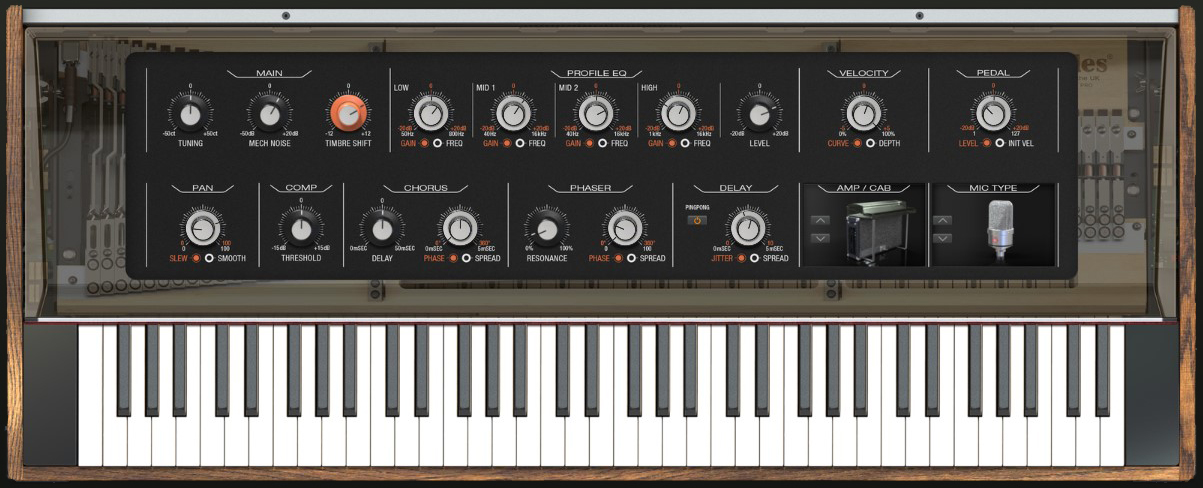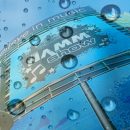 Back in June 2006 we looked at the last incarnation of Dave Smith’s Evolver synthesizer — the Mono Evolver keyboard. We loved its depth and rich sound. Now we have in front of us Smith’s latest creation — the Prophet ’08. This keyboard might seem like a step back in time from the Evolver, in a sense picking up where he left off with the Prophet 5. But there is some serious horsepower under the hood, far surpassing the capabilities of the Prophet 5 and proving quite competitive with some virtual analogs on the market.
Back in June 2006 we looked at the last incarnation of Dave Smith’s Evolver synthesizer — the Mono Evolver keyboard. We loved its depth and rich sound. Now we have in front of us Smith’s latest creation — the Prophet ’08. This keyboard might seem like a step back in time from the Evolver, in a sense picking up where he left off with the Prophet 5. But there is some serious horsepower under the hood, far surpassing the capabilities of the Prophet 5 and proving quite competitive with some virtual analogs on the market.
The Prophet ’08 has a five-octave keyboard featuring eight voices with two oscillators per voice, and a 2/4 pole Curtis filter. At first glance, it might just seem like a Prophet 5 with three extra voices and more patch storage, but it’s much, much more! With four LFOs, a gated step sequencer, substantial modulation routing, and a simple yet sonically powerful Combi mode, the breadth of sounds achievable on this new machine is truly massive.
| Category | Value | Rating |
| Features | 20% | |
| Usability | 25% | |
| Sound | 25% | |
| Documentation & Support | 10% | |
| Price | 20% | |
| OVERALL RATING = 3.8, which earns it a WIHO Award! 3.6 stars or better: Outstanding, WIHO Award 3 stars or better: Worth considering 2 stars or better: Suited to specific needs 1 star or less: Not recommended |
||
Overall, we loved the classic sounds the Prophet ‘08 was capable of achieving (some equipment in our studio will be retired thanks to the Prophet!) as well as the crazy and bent sounds we coaxed out of it in the first few hours of knobbing around. The interface and programmability are what we’ve come to expect from DSI: intuitive and immediate. The monstrous amount of available modulation and sequencing options with the gated sequencer, LFOs, and on-board arpeggiator really push this board into some new territory.
In our opinion, this is a truly must-have synthesizer for people looking for a solid workhorse polyphonic analog without having to hunt down classic boards on the used market (besides, that vintage gear can require lots of extra maintenance). And if you’re not interested in adding another keyboard to your collection, DSI introduced a tabletop version of the ’08 at Winter NAMM, too!
Features
The Prophet ’08 features a five-octave synth-action keyboard with velocity and aftertouch. The action feels good overall, and user-selectable aftertouch curves let you customize the response to your style of play.
The pitch and modulation wheels are mounted above the keyboard on the panel, which cuts some length off of the board, making it ever so slightly shorter than other five-octave keyboards (in our NYC studio this is a big plus: any space saved is always appreciated). At first sight, having the pitch and mod wheels in this position seemed awkward, but in use they are a treat, and pose no actual performance compromises.
The Prophet ’08 is a beautiful synth to behold, with classic wood ends mated to an all-metal chassis painted matte black. But on a purely aesthetic visual note: the front panel is not silk-screened directly on the metal, but is instead attached to the panel as a rugged plasticized label. This is the same on all of DSI’s products, but some of our staff think the extra step in silk-screening the panel is worth doing — the products are just too classy in every other way. Ironically, DSI’s overlay allows for finer registration of colors than traditional silk-screening.
On the back, there are multiple ins and outs including the standard ports you’ve come to expect (MIDI In, Out, Thru) and analog stereo outputs. But on top of that, the Prophet ’08 features a Poly Chain out, which allows you to connect additional Prophet ’08’s (such as the recently announced tabletop/rack version) for additional polyphony. The Poly Chain out also acts as a second MIDI Out, so you can control two sound sources simultaneously without routing through a MIDI interface (our NYC bureau chief is quite enamored with this feature....).
Besides the main stereo outputs, there is also a secondary set of outputs. The Prophet ‘08 features two layers per program, and when cables are inserted into the secondary outs the layers split to the two separate outputs. More details on this feature follow.
There are also two pedal inputs: Sustain (for all standard issue sustain pedals) and Pedal/CV, which can get wacky in the wrong hands as the CV input can receive 0 to 5V DC voltage, enabling some interconnectivity with analog sequencers and other control pedals. But this begins our downward spiral into the magical chaos that is the modulation routing! We’ll get back to that after we talk about the oscillators....
 The Prophet ‘08 features 256 programs, in banks of 128 sounds each. Each program features eight voices, each with two digitally-controlled analog oscillators. Featuring saw, triangle, saw/triangle mix and pulse waves, as well as PWM and hard sync, the basics are covered and we’re in familiar territory. Utilizing the same DCOs as the analog side of the Evolver series, the punch, warmth, clarity and (when needed) grit are all here in the flesh and ready to go. Each voice is completed by a Curtis switchable 2/4 pole analog filter for classic sound shaping. There’s also a white noise generator, all-analog VCAs, and a separate glide control for each oscillator.
The Prophet ‘08 features 256 programs, in banks of 128 sounds each. Each program features eight voices, each with two digitally-controlled analog oscillators. Featuring saw, triangle, saw/triangle mix and pulse waves, as well as PWM and hard sync, the basics are covered and we’re in familiar territory. Utilizing the same DCOs as the analog side of the Evolver series, the punch, warmth, clarity and (when needed) grit are all here in the flesh and ready to go. Each voice is completed by a Curtis switchable 2/4 pole analog filter for classic sound shaping. There’s also a white noise generator, all-analog VCAs, and a separate glide control for each oscillator.
The keyboard modes offer some great options as well:
- Normal Mode: This is the basic mode of operation, with all eight voices focused on one primary patch.
- Stack Mode: This is a “combi” mode, with two layered patches, each using four voices apiece. Each layer is its own individual program, with its own unison, sequencer, and arpeggiator settings. This allows you to create some interesting dueling sequencer effects, or “dual unison” patches with two unison patches fighting for every frequency your monitors will allow.
- Split Mode: Theoretically identical to Stack mode, only there is no overlap. Based on a programmable split point you have control over two sounds each with its own active keyboard zone.
For one (or more) finger sequence fun, there are two routes with the Prophet ‘08: the Gated Sequencer and the Arpeggiator. The Arpeggiator features standard Up, Down, Up/Down, as well as Assign mode, which follows the notes in the order they were played. The Gated Sequencer is another story: when used in a patch, while holding down keys, the 4x16 step sequences can be used as pitched sequence controllers or to control other parameters such as filter cutoff, envelope amount, etc. Wow!
Then it gets all out WRONG (in such a right way!).
The Prophet ‘08 has four LFOs, three envelopes (with the third envelope capable of looping), and a modulation matrix that allows you to modulate just about anything with anything. Add to that the previously mentioned Gated Sequencer which can act as a mod source, and we’re talking about some seriously expansive modulation routing for an analog polyphonic synth. Just to illustrate, here are the modulation sources:
Sequencers 1-4
LFOs 1-4
Filter envelope
Amp envelope
Envelope 3
Pitch Bend
Mod Wheel
Aftertouch
MIDI Breath controller, foot controller, expression pedal
Keyboard Velocity
Keyboard Note Number
Noise
We could list the destinations, but that would take up a lot of space, and it can be summed up as this: most everything is up for grabs.... and that is a beautiful thing!
Usability
The construction of the Prophet ‘08 is quite solid. It feels rugged, and definitely roadworthy for the serious pro. We do have to nit-pick one detail, though: the knobs have some slight wobble to them. This doesn’t impair their usability in any way, but they feel less than solid in use.
The keyboard itself felt great, and once we adjusted the response curve to better suite our desired feel, we were really able to bring the factory presets to life (which is usually a helpful starting place to hear what a keyboard is capable of delivering).
The Prophet ‘08 is a massive revamping of the traditional polyphonic analog synth, so while the things you expect are all there (dedicated knobs for each function, clearly laid out panel for navigating through a program), the wonderful world of modern microprocessors adds a very friendly UI for interfacing with the modulation matrix and the higher functions of the sequencer.
We give full kudos to the overall UI and immediacy of tweaking available on the Prophet ‘08. Face it — one of the joys of classic analog synths is the immediacy of their user interface. Turn a knob; hear your sound change. With controls well laid out and organized across the top panel, DSI couldn’t have made the Prophet ’08 any easier to program.
With the depth available in the Modulation Matrix, we found the implementation ideal. The Modulator section groups all of the modulation options in a straightforward way, letting you quickly select a source and a destination, and then edit the value with a dedicated knob for each purpose.
For example, we were able to route a tempo-synced square wave LFO to a filter cutoff so that while we played back a sequence programmed in our DAW, the LFO ran at 16th notes mapped to the incoming MIDI clock, creating a stuttered hi-resonance filter effect.
For another patch, we set the sequencer in our DAW to play a chord, with the Prophet's arpeggiator set to respond to incoming MIDI clock as well. By then adding a modulation bus directing an LFO to the Envelope Decay set to sixteen steps, we created a gradual increase in note duration over one bar. Crazy stuff!
This is where we should also mention the implementation of the sequencer controls. Hitting the Edit Sequencer button in the Modulators section switches all of the orange-labeled controls in the Amp and Filter section to Sequence Edit mode. This gives you sixteen knobs with which to edit each individual step in each of the four sequences (selectable by the four numbered buttons in the Modulators section). Each step can have any range of value from 0-125 (or a note name when Oscillator Frequency is selected as a destination), with the last position reserved for “reset,” which allows you to create sequences shorter than 16 steps.
Similar to our report on the Mono Evolver Keyboard, the only real usability issue we found was the lack of a dedicated alpha knob for preset selection and general menu functions, again relying on the use of two Parameter knobs. These are just like the rest of the knobs on the board in that they are continuous (no center detents). As such, it’s far too easy to scroll too quickly. This is partially compensated for by Up/Down buttons, but a dedicated and detented knob would have been useful.
Sound
Ultimately, any review of an analog keyboard comes down to this question: how does it sound? If you read no further, know that the Prophet ’08 is one awesome sounding synthesizer that everyone on our editorial team was impressed by.
While we don’t have an original Prophet 5 in our studio to do any “classic vs. modern” comparisons, we’re familiar enough with the sound quality of the Prophet 5 to say that the spirit lives on in the Prophet ’08! Featuring an all-analog signal path, and sharing similar voice architecture to the Prophet 5, the Prophet ‘08 is definitely able to hit some of the classic marks of its grandparent.
The factory presets do a wonderful job of showcasing the capabilities of the Prophet ‘08. There are many classic Prophet sounds on display, from searing sync leads to slow soft pads, and we were very impressed with the organ and “piano” presets in their playability and tone.
We have to hand it to DSI in one regard: bass! The Prophet ‘08 (as is the Mono Evolver) is capable of absolutely mind numbingly rich, beefy, woofer-blowing sub-sonics. There’s a richness to it that is really appealing, and we were quite happy to hear the Prophet ‘08 was no slouch in this category when compared to it’s sibling in the product family.
There’s a fair amount of space in the preset library dedicated to the more off-kilter reaches of the Prophet ‘08, which is definitely welcome! Glitchy attacks of noise, sequenced self-resonating filter drum loops, sparkling FM style pads (go figure), it’s all lurking in the presets to get you charged up to dig in and start making your own sounds.
Overall, the included presets do a fantastic job of whetting a programmer’s appetite to forego sleep and spend some significant time putting together patches of your own.
Documentation and Product Support
The user manual is concise and well organized to get you up and playing quickly. Attention is paid primarily to the modulation matrix, keyboard modes, and MIDI implementation, as the overall basics of the synth are traditional analog synthesis.
Support: we actually did have to make use of it. When our unit arrived, we removed it from the box and noticed that something was rattling inside the case. After a call to DSI, and offering to do a full “open ‘er up and see what’s makin’ all the racket” (we were eager to play and didn’t want to wait for a replacement unit), we found a key weight had come loose and needed to be replaced.
A replacement key was with us in less than three days, and installing it with their included instructions proved very straightforward. Overall, the interaction with the team at DSI was pleasant and quick: no robots answering the phone, no endless menus to get to the right person… we almost wish they handled tech support for other companies!
Price
The Prophet ’08 (MSRP $2,199) has a street price of $2,000, which places it at a great price point compared to many virtual-analog synthesizers that have come out in the past few years. For someone craving an entirely analog, pro-class polyphonic keyboard, this price is near impossible to beat.
Contact Information
Dave Smith Instruments
www.davesmithinstruments.com
| Evaluation Short-List |
|

